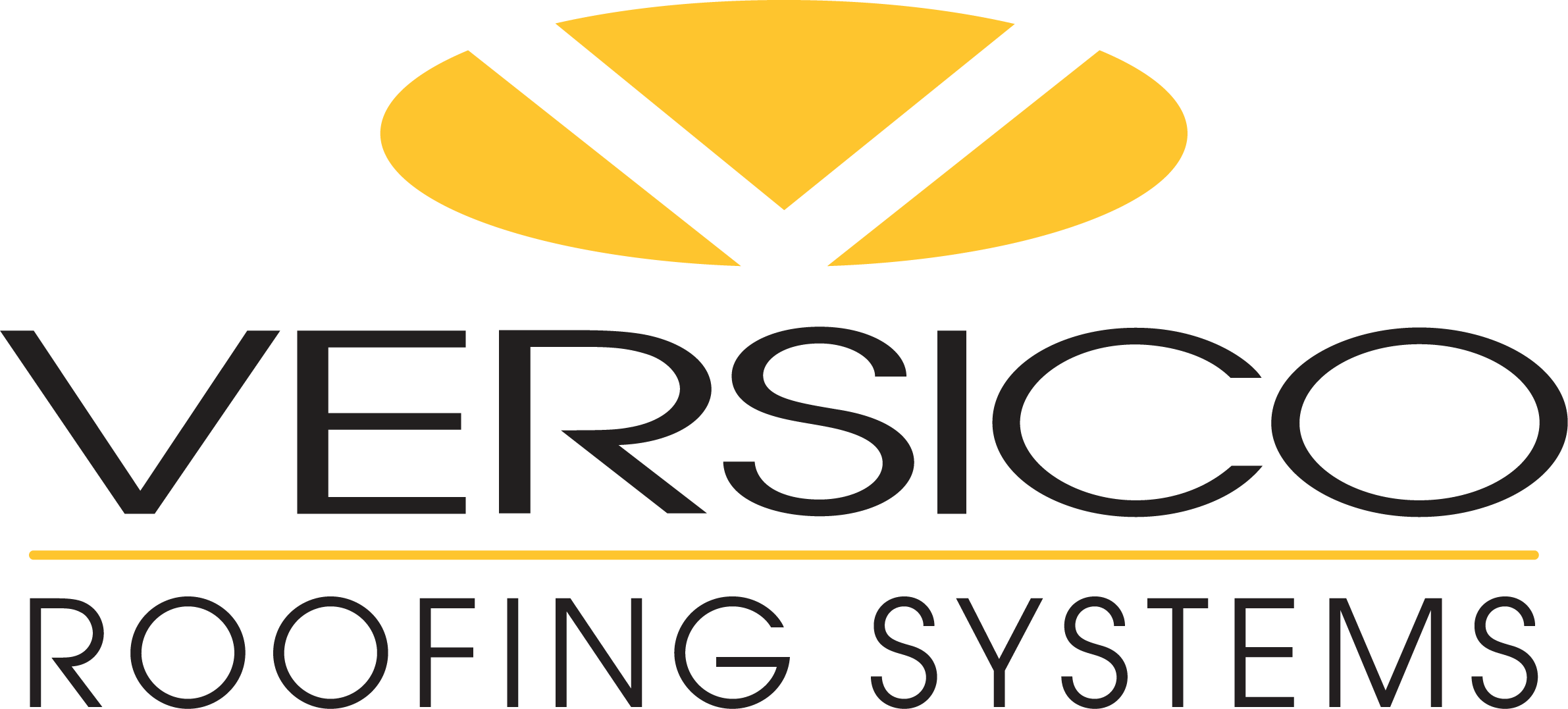Moisture in Roofing – Thermal and Moisture Scans
Existing commercial roofs receiving annual maintenance or inspections are more likely to find trouble before it starts, such as clogged drains, storm damage and or compromised seams or flashing.
What happens when a roof leak develops and the roof hasn’t been inspected in years? Where do you start?
A moisture scan, using thermal imaging or Electronic Leak Detection (ELD), is the best solution to find wet insulation and areas where leaks are occurring in a large area such as a commercial roof.
Thermal Imaging using Forward Looking Infrared (FLIR)
A non-destructive test which uses FLIR to show temperatures of various materials in color imaging which is used to “see” areas of heat/cold, depending on season and time of day. Areas of heat loss can be ‘seen’ as wet insulation or gaps in the insulation. This allows for area of work determinations for searching for roof membrane breeches and identifying areas of insulation removal and replacement.
Electronic Leak Detection (ELD)
A non-destructive test that uses a brush, broom, roller, platform, or probes along with low or high voltage current to find breeches, holes and seam voids in the roof membrane or flashings, by completing a circuit with the electrical charge. A breech free membrane will block any water and therefore, any electrical current. If a leak is present, the water will make its way through the membrane and must touch an electrically grounded conductive substrate directly below the membrane. This allows an electrical circuit to be completed and the testing equipment and technician to accurately pinpoint the membrane breech.
ASTM Guide D7877-14 “Standard Guide for Electronic Methods for Detecting and Locating Leaks in Waterproofing Membranes”, lists the four different ELD test methods. Those four test methods are: Low-Voltage Scanning Platform, Low-Voltage Vertical Roller, Low-Voltage Electronic Field Vector Mapping, and High-Voltage Spark or Holiday Testing.
All four of the ELD test methods require the same basic requirements: A conductive substrate must be present directly below the membrane. A valid ground connection must be provided. The membrane must be exposed. The roof system must have a continuous, unbroken electrical path from the top of the membrane to the conductive substrate below.
ELD testing accurately pinpoints leaks in the roof membrane, limiting the repairs needed in the roof areas in which damage has been identified, in lieu of replacing, or repairing the entire roof. While these methods are not a substitute for an annual roof inspection program they certainly help when making important budgeting decisions.
While Versico does not offer these services, there are many reputable roof inspectors and thermal imagers throughout North America. The International Institute of Building Enclosure Consultants (IIBEC) Member Directory is good start to locate a professional near you.
Contact Craig Tyler with further questions.
What happens when a roof leak develops and the roof hasn’t been inspected in years? Where do you start?
A moisture scan, using thermal imaging or Electronic Leak Detection (ELD), is the best solution to find wet insulation and areas where leaks are occurring in a large area such as a commercial roof.
Thermal Imaging using Forward Looking Infrared (FLIR)
A non-destructive test which uses FLIR to show temperatures of various materials in color imaging which is used to “see” areas of heat/cold, depending on season and time of day. Areas of heat loss can be ‘seen’ as wet insulation or gaps in the insulation. This allows for area of work determinations for searching for roof membrane breeches and identifying areas of insulation removal and replacement.
Electronic Leak Detection (ELD)
A non-destructive test that uses a brush, broom, roller, platform, or probes along with low or high voltage current to find breeches, holes and seam voids in the roof membrane or flashings, by completing a circuit with the electrical charge. A breech free membrane will block any water and therefore, any electrical current. If a leak is present, the water will make its way through the membrane and must touch an electrically grounded conductive substrate directly below the membrane. This allows an electrical circuit to be completed and the testing equipment and technician to accurately pinpoint the membrane breech.
ASTM Guide D7877-14 “Standard Guide for Electronic Methods for Detecting and Locating Leaks in Waterproofing Membranes”, lists the four different ELD test methods. Those four test methods are: Low-Voltage Scanning Platform, Low-Voltage Vertical Roller, Low-Voltage Electronic Field Vector Mapping, and High-Voltage Spark or Holiday Testing.
All four of the ELD test methods require the same basic requirements: A conductive substrate must be present directly below the membrane. A valid ground connection must be provided. The membrane must be exposed. The roof system must have a continuous, unbroken electrical path from the top of the membrane to the conductive substrate below.
ELD testing accurately pinpoints leaks in the roof membrane, limiting the repairs needed in the roof areas in which damage has been identified, in lieu of replacing, or repairing the entire roof. While these methods are not a substitute for an annual roof inspection program they certainly help when making important budgeting decisions.
While Versico does not offer these services, there are many reputable roof inspectors and thermal imagers throughout North America. The International Institute of Building Enclosure Consultants (IIBEC) Member Directory is good start to locate a professional near you.
Contact Craig Tyler with further questions.
Up Next
August 05, 2021
Paper Faced vs Coated Glass Faced Polyiso
Not all facers are created equal. Our insulation product specialist breaks down the difference between paper- and glass-coated facers.
July 22, 2021
PVC Roof Considerations
Understanding the makeup of PVC and its compatibility with existing roof types is important when planning your next PVC roofing project.
July 08, 2021
Energy Codes and Roof Drains
What level of insulation should you have at roof drains? Do you need the minimum above-deck insulation level as prescribed by International Energy Conservation Code (IECC)? The answer is yes – unless you’re using tapered insulation.

